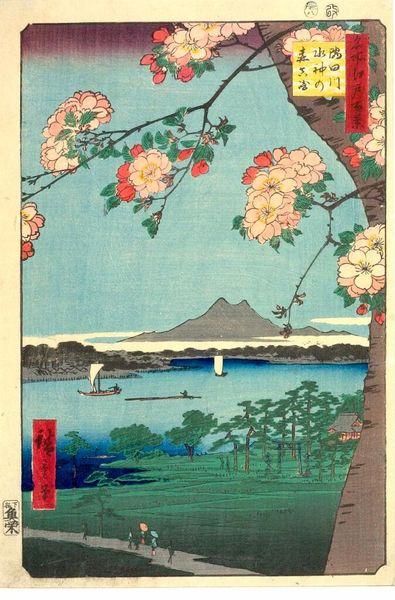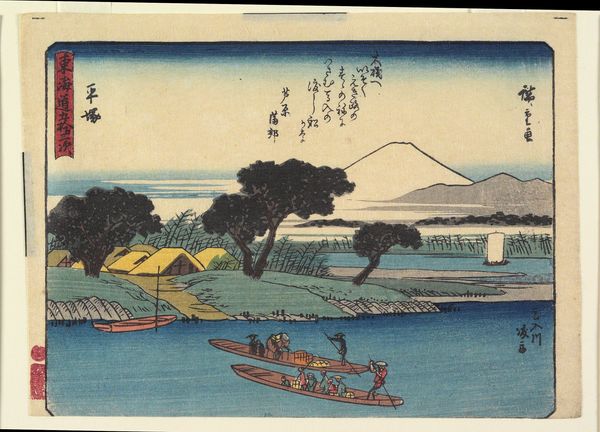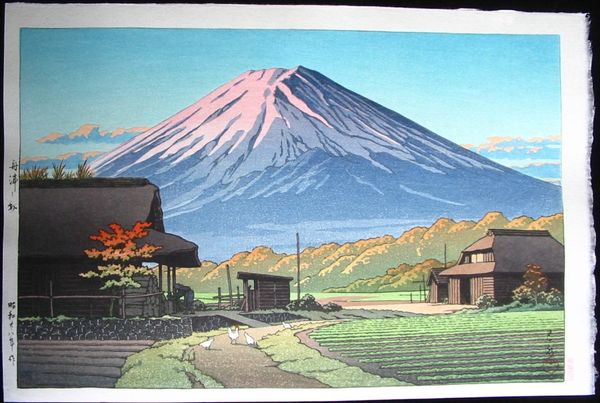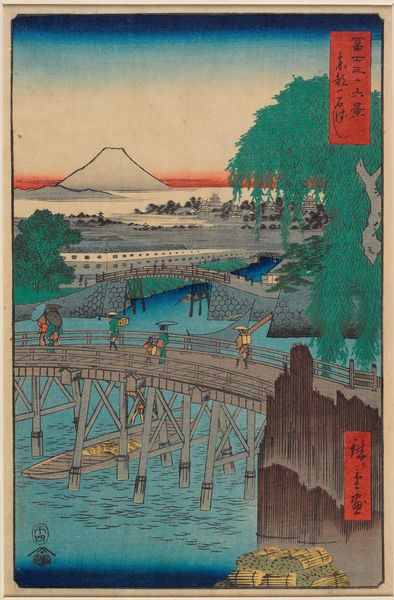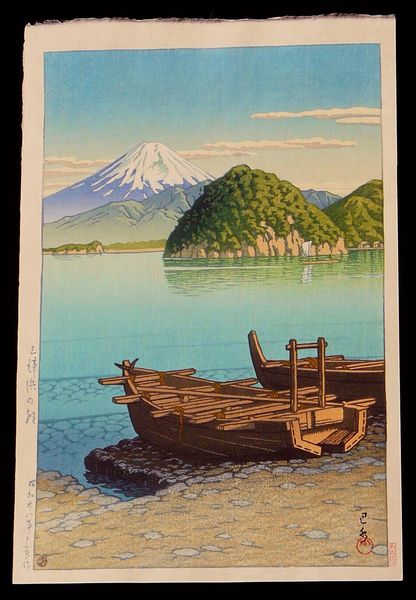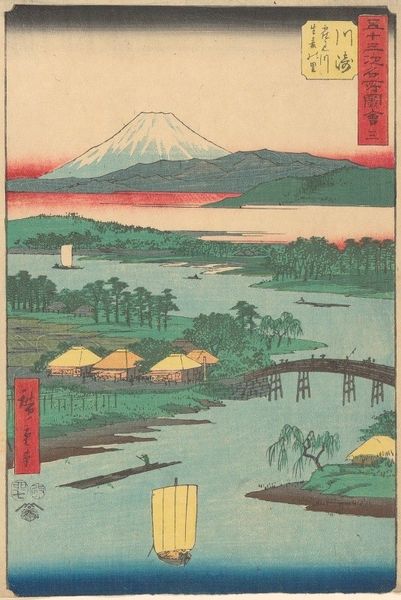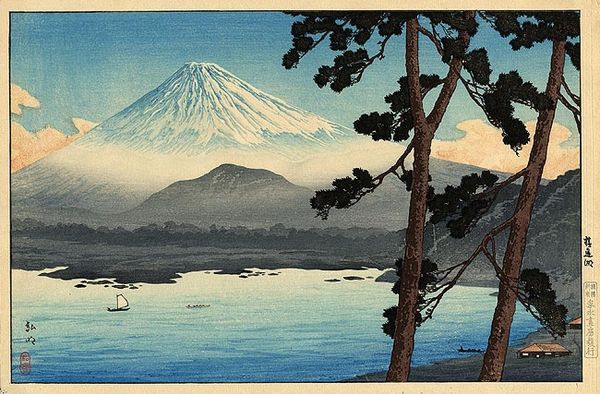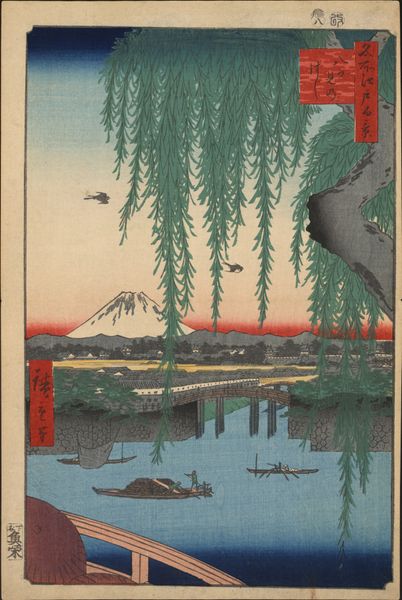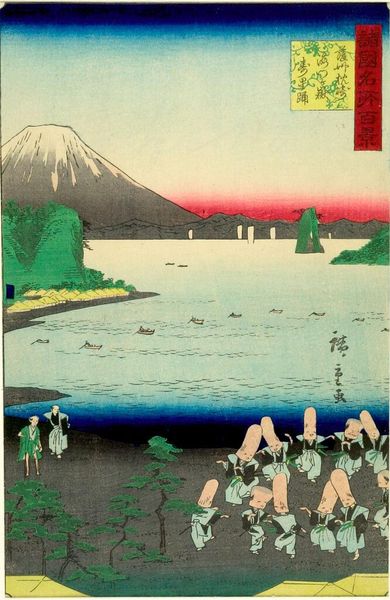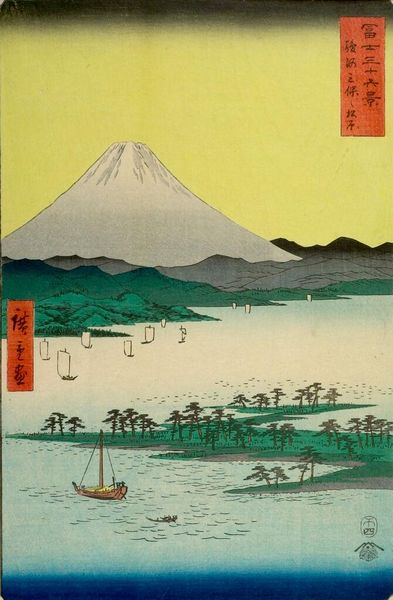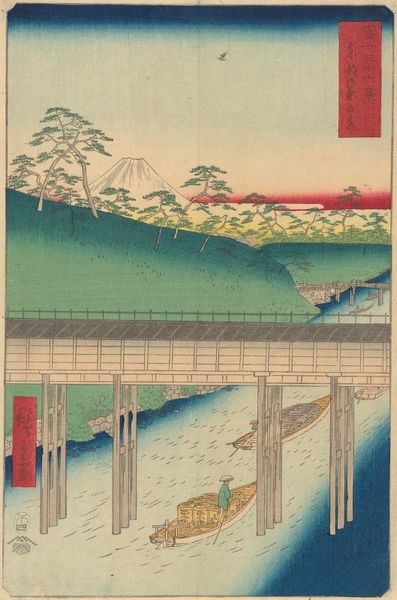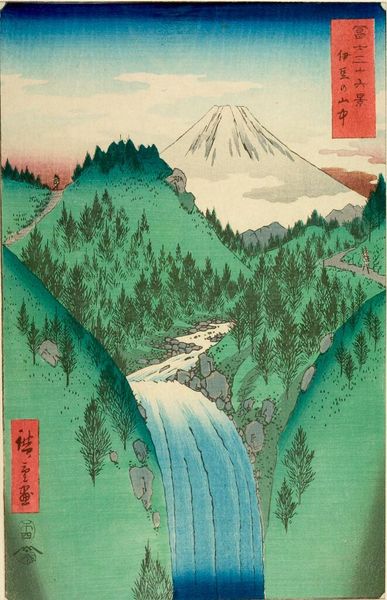
Copyright: Public domain Japan
Editor: This is "Mount Fuji by Moonlight, Kawai Bashi," a 1947 woodblock print and watercolor by Hasui Kawase. There’s such a serene, almost hushed feeling to this cityscape with Mount Fuji in the distance. The deep blues and greens really set a nighttime mood. What stands out to you, compositionally? Curator: Notice how Kawase uses a strong vertical format, immediately drawing our eyes upward, accentuating the towering presence of Mount Fuji. The bridge acts as a strong horizontal element, grounding the scene and leading the eye into the depth of the composition. This interplay of horizontal and vertical, coupled with a very controlled palette, constructs the formal balance here. What do you make of that solitary figure on the bridge? Editor: It feels almost like an interruption of the peaceful scenery. It breaks the pattern in the lines. Curator: Precisely. That single figure provides scale, highlighting the grandeur of the mountain, but also introduces a diagonal, subtle counterpoint to the prevailing grid structure of the bridge. Observe how the artist creates the illusion of depth through carefully calibrated shifts in tonal value rather than by a traditional linear perspective. Where would you say that you find contrast? Editor: I see it in the texture! The rough texture of the trees up against the smoothness of the mountain. It is also a visual contrast between the natural forms and the constructed geometric form of the bridge. Curator: Good eye! Kawase also carefully calibrates textures to create visual interest. By engaging with these internal dialogues—the balance of line, color, and texture—we unlock the artwork’s formal power. Editor: This makes me appreciate how even a seemingly tranquil landscape is so carefully constructed, through line and colour. I have learnt how the artist combines horizontal, vertical, and diagonal lines for overall effect. Curator: Absolutely. Form is the message. That, indeed, is what Kawase invites us to understand.
Comments
No comments
Be the first to comment and join the conversation on the ultimate creative platform.
